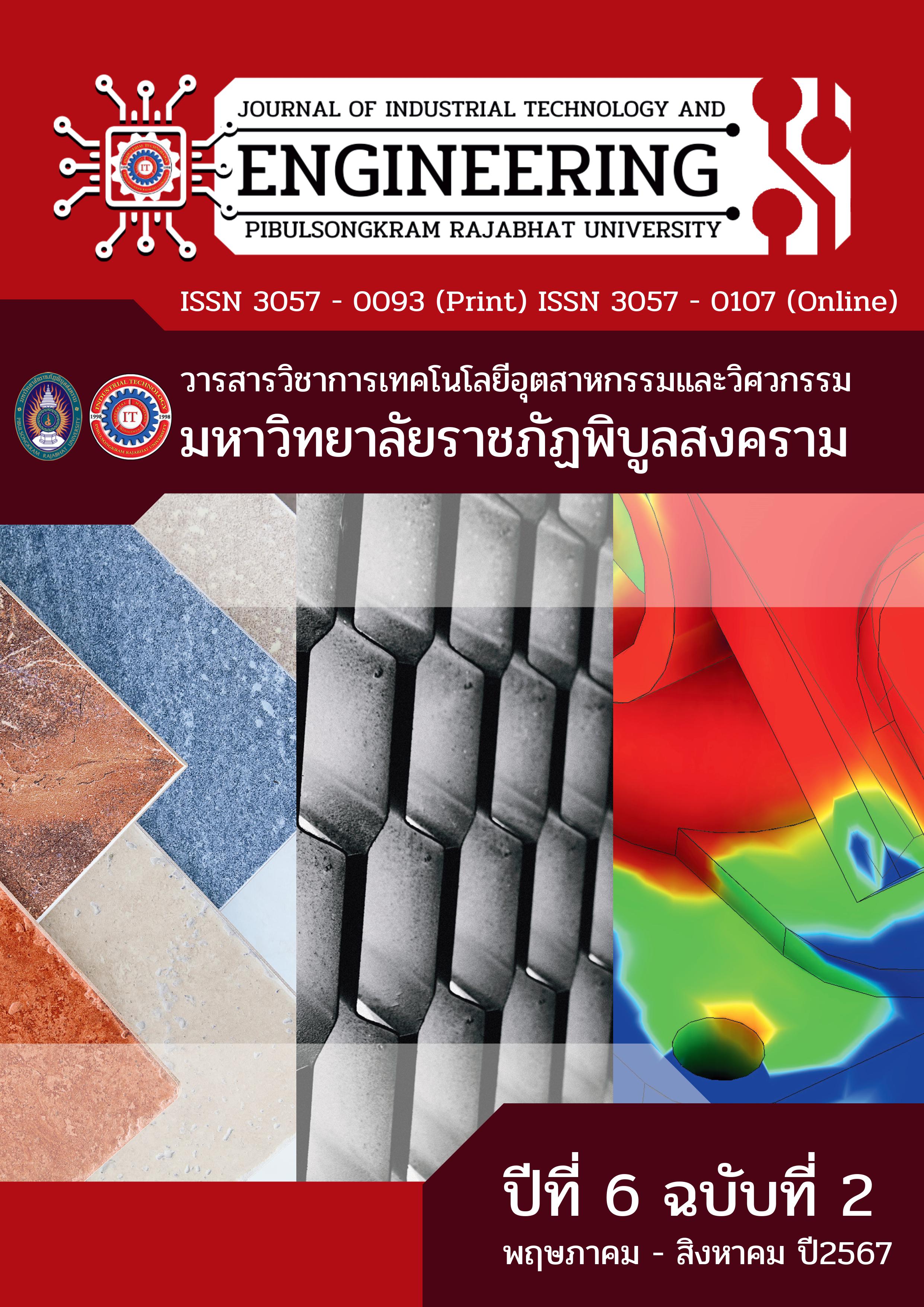A STUDY OF ENGINEERING PROPERTIES OF CONCRETE BLOCKS MIXED WITH OYSTER SHELL WASTE
Keywords:
Concrete blocks, Oyster shells, Compressive strengthAbstract
This research paper studied the engineering properties of concrete blocks mixed with oyster shell waste by substituting the crushed oyster shell waste for rock dust at a rate of 0, 20, 40, 60, 80, and 100 percent by weight, respectively. Concrete blocks were formed in the size of 7 x 19 x 39 centimeters with a 1:6 mixing ratio of cement to rock dust by weight. The blocks were taken into study after 7, 14, and 28 days of curing periods. The objectives of this study are 1) to investigate the physical properties and chemical composition of the crunched oyster shells; 2) to study the physical and mechanical properties of the concrete blocks using crunched oyster shells substituted with rock dust in alignment with the TIS 58-2017 regulation; and 3) to study and analyze the cost of producing non-load-bearing hollow concrete blocks substituted with the oyster shell waste as per the TIS 58-2017 regulation.
The research results showed that the oyster shell waste consisted of 48.85 percent calcium oxide, a high percentage compared to only 1.8 percent of the rock dust. Since the oyster shell waste had not gone through the firing process, the moisture and free carbon content inside were still high, causing a higher water demand. The specific gravity of rock dust and oyster shell waste was 2.67 and 2.50, while the water absorption values were 3.2 and 9.3, respectively. As for compressive strength values, the concrete blocks with the 20 percent mixing rate, cured for 28 days at the maximum, had the highest compression resistance value of 84 kilograms per square centimeter. The research suggested that producing non-load-bearing hollow concrete blocks with oyster shell waste substitution at a rate of 20 percent, which is in alignment with the TIS 58-2017 regulation, can reduce the cost by 0.49 baht per block, equivalent to a 9.58 percent reduction of each concrete block.
References
ดิศสกุล อึ้งตระกูล และกิตติพงศ์ รื่นวงศ์. (2562). การพัฒนาคอนกรีตบล็อกจากใยบวบหอม. วารสารวิชาการการออกแบบสภาพแวดล้อม, 1, 92-107.
"เส้นพลาสติกรักษ์โลก" จาก "เปลือกหอยแมลงภู่" คืนชีพขยะ PLA แก้ปัญหาชุมชน ฝีมืือนาโนเทค สวทช.-จุฬาฯ. (22 พฤศจิกายน 2566). ผู้จัดการออนไลน์. ค้นจาก https://mgronline.com/greeninnovation/detail/9660000104483
Aljerf, L. (2015). Effect of thermal-cured hydraulic cement admixtures on the mechanical properties of concrete. Intercom-International Ceramic Review, 64(8), 346-356.
ASTM Standard. (2013). Standard Test Method for Density, Absorption, and Voids in Hardened Concrete. Retrieved from www.astm.org: ASTM International.
ASTM Standard. (2014). Standard Test Method for Density, Absorption, and Voids in Hardened Concrete. Retrieved from www.astm.org: ASTM International.
ASTM Standard. (2019). Standard Test Method for Sieve Analysis of Fine and Coarse Aggregates. Retrieved from www.astm.org: ASTM International.
ASTM Standard. (2019). Standard Test Method for Compressive Strength of Hydraulic Cement Mortars Using 2-in. (2020). [or 50-mm] Cube Specimens. Retrieved from www.astm.org: ASTM International.
Bahij, S., Omary, S., Feugeas, F., & Faqiri, A. (2020). Fresh and hardened properties of concrete containing different forms of plastic waste–A review. Waste Management, 113, 157-175.
Kaya, A., & KAR, F. (2016). Properties of concrete containing waste expanded polystyrene and natural resin. Construction and Building Materials, 15(105), 572-578.
Madhu, G., Bhunia, H., Bajpai, P.K., & Chaudhary, V. (2014). Mechanical and morphological properties of high-density polyethylene and polylactide blends. Journal of Polymer Engineering, 34(9), 813-821.
Paopongpaiboon, K., Boonserm, K., Chindaprasirt, P., & Horsakulthai, V. (2019). The effect of organic solvent patios on mechanical properties and thermal conductivity of walkway block from waste foam residue. The Engineering Institute of Thailand under H.M. The King’s Patronage, 30(4), 121-132.
Solomon. A., & Hemalatha, G. (2018). Experimental investigation of insulated concrete form (ICF) wall panels under quasi-static cyclic load. International Journal of Engineering and Advanced Technology (IJEAT), 8(2), 84-88.
Suwansaard, A., Kongpun, T., & Khemkhao, M. (2021). Properties of Mortar Composites from Plastic Waste. Journal of Applied Science and Engineering, 25(1), 59-70.
Suwansaard, A., Kongpun, T., & Khemkhao, M. (2022). Properties of Mortars Mixed with Polystyrene and Hemp Fiber Wastes. Applied Science and Engineering Progress, 15(1), 1-11.
Thai Industrial Standard (TIS). (2017). TIS no. 58-2560 Hollow non-loadbearing concrete masonry units. Ministry of Industry (Thailand).
Wang, R., & Meyer, C. (2012). Performance of cement mortar made with recycled high-impact polystyrene. Cement and Concrete Composites, 34(9), 975–981.



